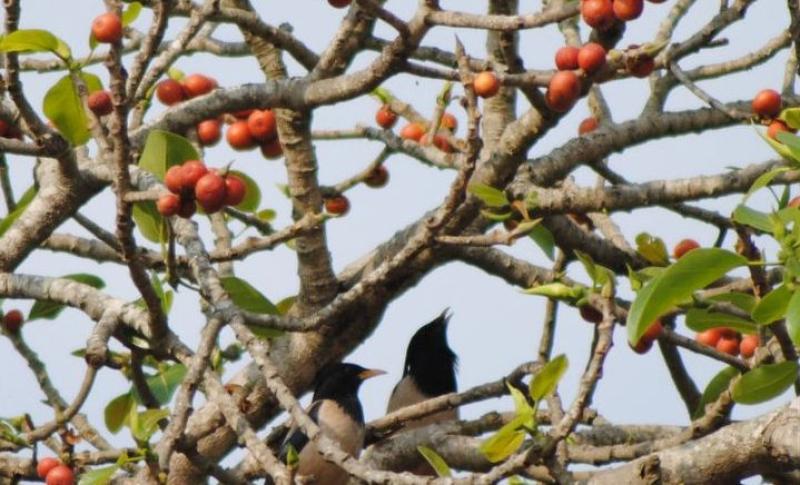
Once known for its green cover, rapid urbanization and expansion of Bengaluru in the last two decades has led to the city losing 78 per cent of its green cover. The city’s fig trees, however, have withstood the onslaught of concretization.
Researchers from the Indian Institute of Science (IISc), here aiming to evaluate loss of green cover studied the genetic structure and diversity of the cluster fig tree (Ficus racemosa) population in the once famous ‘Garden City of India’.
The study serves as a reminder that urban greening programmes must also utilize genetic information while planning for large scale afforestation programmes. It study provides important insights into the population genetic structure of the cluster fig tree, which can be vital in guiding plantation efforts in urban greening programmes. Since urban plantation programmes often do not have such genetic information, they can be ineffective in maintaining healthy populations of trees and plants. Population of trees with low genetic diversity, or monocultures arising from vegetative cuttings can be quickly decimated by a single disease.
For the study, the researchers collected leaf samples from individual trees from different locations across the city including the IISc campus, Gandhi Krishi Vigyan Kendra campus, Kurubarahalli and Lalbagh. “We chose those 4 sampling sites simply because we knew of F. racemosa trees there", says Anusha Krishnan, one of the authors of the study.
The study revealed that the population of cluster fig trees in Bengaluru has a fairly robust genetic structure, with no signs of inbreeding. An ecosystem that is fragmented, and has few breeding individuals has a high chance of developing problems due to inbreeding. Inbreeding results in low genetic diversity that could cause loss of fitness and increase the risk of extinction for small population of individuals. However, in the case of the cluster fig trees, the credit for maintaining healthy population probably goes to their pollinator fig wasps, which live in a special mutualism with the fig.
On the positive side of things, conserving what is left of urban biodiversity in Bengaluru is gaining momentum with the initiation of many programmes to increase and protect its green cover. However, how successful can such programmes be in a city which has highly fragmented green areas? Ficus racemosa is also called a ‘keystone’ species since it supports a large number of life forms – insects, small bats, flying foxes, birds and squirrels – much like the central ‘keystone’ in a stone arch that supports the other stones of the arch. If the ‘keystone’ of an arch is lost, the entire arch is destroyed. In addition, fig trees are a special home to fig wasps – tiny insects that live a large part of their lives within the flowers and fruits of the fig trees. In fact, almost every species of fig tree has its own, unique assemblage of specific wasp species that it supports.
DNA extracted from the collected leaves was used to conduct a form of genetic analysis called microsatellite analysis. A microsatellite is a tract of repetitive DNA, in which a particular sequence is typically repeated ~5-50 times. Since the number and patterns of repeats for a set of microsatellites can be unique to each individual, the technique is often used in the identification or ‘genetic fingerprinting’ of individuals. Using this information, and specialized software, the authors were able to investigate the genetic relationships between the sampled trees in Bengaluru.
“The fig - fig wasp mutualisms is especially helpful for the fig trees in maintaining a healthy population genetics even though trees occur at low densities, and is located far from each other”, states Ms. Krishnan.
How exactly do the wasps help figs in this? “The fig wasps of monoecious figs (figs that bear both male and female flowers on the same plant) like F. racemosa are known to use wind currents to travel many tens of kilometers. Because of such long-distance pollen dispersal characteristics, these trees are unlikely to face problems with inbreeding even at low population densities”, explains Anusha Krishnan.






